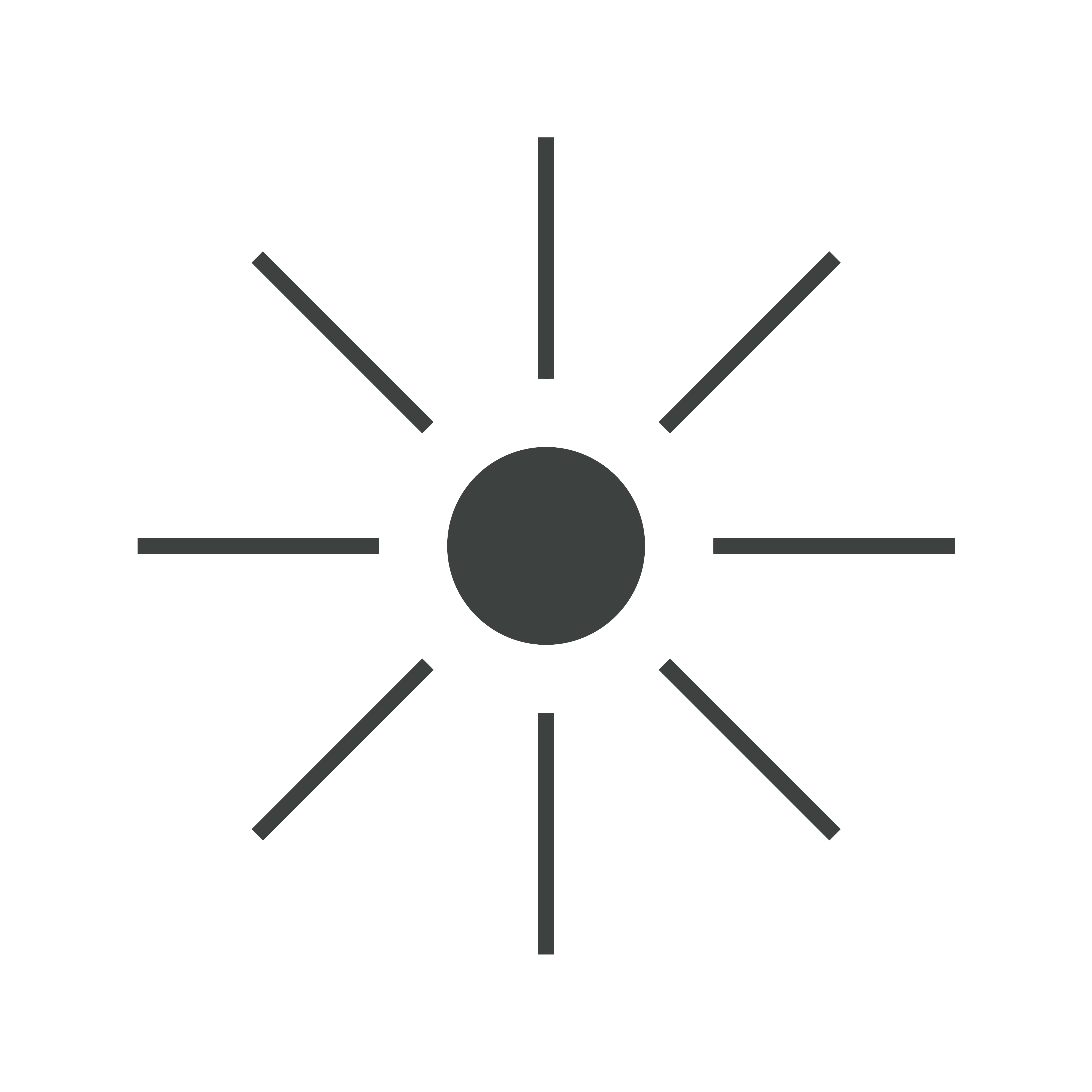
The 4 Levels of Business Monitoring [and Our Expert Tips]
Monitoring
12 minutes
Short on time? Tune in to our podcast version:
I think we can all agree, doing business in a silo is practically impossible. Our companies operate in a market that changes quickly, often, and unpredictably.
Yet, some companies always seem to be one step ahead.
Several factors can explain this lead. It might be luck, maybe more experience, or perhaps their team has a better-defined strategic monitoring process and structure than other industry players. We're leaning towards the third option.
And we know, strategic monitoring is key. But between the daily grind and lack of time, we sometimes let ourselves go, we stagnate. We'd like to shift into higher gear, better structure our intelligence gathering, share information more effectively with our key players, and above all, use it wisely.
That’s why we aim to break down the different levels of strategic monitoring, share practical tips to help you reach the next level, and show you how to transform your monitoring strategy.
Level 1: Individual, Spontaneous Monitoring
This is the most basic level, often unstructured and disparate. Here, each employee collects information informally, based on their needs and interests, intuitively.
In this approach, there are no strict rules or imposed methods. Everyone is free to explore wherever they see fit: Google, LinkedIn, Twitter, newsletters, conferences... In short, it's up to each individual's initiative, so it's necessarily irregular, depending on each person's time and motivation. In other words, it's the equivalent of watching the morning news.
The main advantage is that it's easy to set up, costs nothing, and encourages curiosity. It's better than nothing. Perfect for meeting a specific information need. However, this method lacks structure. There's a risk of getting scattered, having biased information, and above all, not sharing what you find with colleagues. It's difficult under these conditions to use this information strategically or to measure its impact on the company.
In Practice:
A few minutes each morning, an employee checks their clients' news on LinkedIn and Twitter to identify new sales opportunities. A developer, on the other hand, might subscribe to specialized newsletters to stay up-to-date on the latest technologies and programming languages.
The Next Step:
To move to collective intelligence gathering, it's essential to encourage knowledge sharing and collaboration among colleagues. Organize informal meetings or create a "watch of the week" system. Use simple tools like a dedicated discussion channel or a shared document to facilitate exchanges. The goal is to circulate information and lay the foundation for a more collaborative intelligence practice.
Level 2: Emerging Collective Monitoring
Emerging collective intelligence marks a significant step in structuring strategic monitoring within a company, and it's the stage where most businesses get stuck. It's characterized by the first efforts at collaboration and organization, often initiated within specific teams. While information sharing remains informal, there's a growing awareness of the importance of strategic monitoring and a desire to improve the collection and dissemination of knowledge.
At this stage, teams start using basic tools to facilitate their intelligence work. This might include internal mailing lists, shared folders on the company network, or even free or freemium intelligence tools like Google Alerts or content aggregators. Informal discussion groups, whether through chat platforms or corporate social networks, also play a vital role in information sharing and collaboration.
Although the frequency of intelligence gathering is more regular than at the individual level, it's still ad hoc and depends on the initiative of individuals or teams. We see the emergence of "intelligence champions," particularly motivated and proactive individuals who play a key role in disseminating knowledge within their team.
Emerging collective monitoring has several advantages. It raises awareness of the importance of strategic monitoring within the company, promotes information sharing and collaboration among teams, and enables the identification of trends and opportunities in a more systematic way.
However, this approach still suffers from a lack of formalization and clear methodology. The tools used are often limited and underperforming, and the risk of information silos between teams persists. Additionally, it's difficult to measure the actual impact of intelligence gathering and justify the time investment.
In Practice:
A marketing team that creates an online discussion group to share interesting articles and brainstorm on market trends is a good illustration of this level of emerging collective intelligence.
The Next Step:
To transition to organized collective intelligence, start by setting clear objectives: is it about better understanding your customers, anticipating market trends, or monitoring your competitors? Then identify key information sources, such as specialized websites, social media influencers, or market research reports. Set up a regular intelligence gathering schedule, for example, a weekly press review or twice-weekly social media monitoring. Finally, adopt collaborative tools to centralize and share information, such as Trello to track your intelligence projects or Slack to discuss your findings in real-time.
Level 3: Organized Collective Monitoring
A key element of this level is the designation of an intelligence manager. This person plays a central role in coordinating intelligence activities, ensuring the proper implementation of processes, and promoting information sharing within the team. The use of collaborative tools such as intelligence platforms, corporate social networks, or project management tools becomes essential to facilitate the collection, analysis, and dissemination of information.
Organized collective intelligence gathering is also characterized by a regular and planned frequency, often weekly or monthly, with the possibility of setting up real-time alerts to react quickly to important events. The processes for collecting, analyzing, and disseminating information are clearly defined, and regular meetings are held to share information and discuss its implications. Training teams on intelligence tools and methods is also an important element in ensuring the effectiveness of this approach.
This stage of organization offers many advantages, such as better coordination, efficient knowledge sharing, increased efficiency through formalized processes, and more targeted intelligence gathering that allows for measuring its impact and justifying the investment. It fosters a proactive and strategic approach, enabling the team or department to make informed decisions and adapt quickly to market changes. However, it can also face challenges such as information silos between departments, a focus on tactical rather than strategic intelligence, and a significant initial investment in time and resources.
In Practice:
The marketing team of a cosmetics company uses a curation platform to track the latest beauty trends on social media, blogs, and specialized magazines. Each week, during a dedicated meeting, the team analyzes the collected information, identifies emerging trends (for example, the growing interest in natural products or the development of "skinimalism"), and discusses their potential impact on the company's strategy.
The Next Step:
Actively involve management by regularly presenting them with the results of intelligence gathering and encouraging them to participate in defining objectives and priorities. Develop a culture of strategic monitoring at all levels of the company by organizing training sessions on strategic analysis and encouraging information sharing between different departments. Invest in more advanced analysis tools, such as strategic monitoring software or specialized intelligence platforms, to detect weak signals and anticipate market trends.
Level 4: Integrated Strategic Monitoring
Integrated strategic intelligence represents the pinnacle of maturity in strategic monitoring. At this level, intelligence gathering is no longer an isolated activity but is fully integrated into the company's strategy and driven by top management. It goes beyond simple information collection to focus on in-depth, forward-looking analysis aimed at anticipating environmental changes and informing strategic decisions.
This approach relies on the use of advanced tools such as semantic analysis, big data, and artificial intelligence, which enable the processing and analysis of vast amounts of data to identify emerging trends and weak signals. It also draws on specific skills in strategic analysis and networks of experts and specialized consultants.
Integrated strategic intelligence is characterized by continuous frequency, with regular in-depth analyses, typically quarterly or annually, and real-time alerts to react quickly to important events. It requires a solid organizational structure, often materialized by the creation of a dedicated strategic intelligence department, reporting directly to top management. The strong involvement of management and managers in the intelligence process is essential to ensure its success, as is the continuous training of employees in strategic monitoring and strategic analysis.
The benefits of integrated strategic intelligence are substantial. It provides a comprehensive and forward-looking view of the company's environment, enabling the identification of strategic opportunities and threats. It aids in informed decision-making and anticipating changes, thereby stimulating innovation and value creation. Ultimately, it strengthens the company's competitiveness in the long run. However, this advanced approach requires a significant investment in human, financial, and technological resources. It also demands strong management involvement and a genuine culture of strategic monitoring shared at all levels of the company.
In Practice:
An automotive manufacturer uses strategic intelligence to anticipate developments in the electric vehicle market. They monitor technological advancements in batteries, regulations on emissions, and consumer expectations. This approach allows them to invest in the right technologies, adapt their models to environmental standards, and design vehicles that appeal to customers, thus ensuring a competitive advantage.
Conclusion
Strategic monitoring should help you do your job, not become your job.
It's an evolving process, and it's essential to understand the different maturity levels to adapt your organization and tools based on your company's needs and ambitions.
At LiveSnap, we're dedicated to supporting you in this journey by offering solutions tailored to each stage of your intelligence gathering path.
Reach out today to discuss your specific needs and discover how we can help you implement effective and value-creating strategic monitoring.
Partager cet article:
Learn More

Redefining Strategic Monitoring With Artificial Intelligence | Our Story
The idea to create LiveSnap goes back a long way, and our story begins even before the first line of code was written. It is rooted in the journeys of two pioneering companies: Mirego and Copernic. Through years of developing digital products and search tools, we have acquired recognized expertise that we now want to put at the service of businesses and teams on a large scale.

Monitoring
How to Set Up Effective Competitive Intelligence [Complete Guide]
Competitive analysis is essential to understand the strengths and weaknesses of your competitors and identify opportunities and threats in the market. This guide will provide you with the key steps to conduct an effective competitive analysis.
Leave no room for doubt.Make informed decisions.
Discover how to turn information into a strategic advantage.
